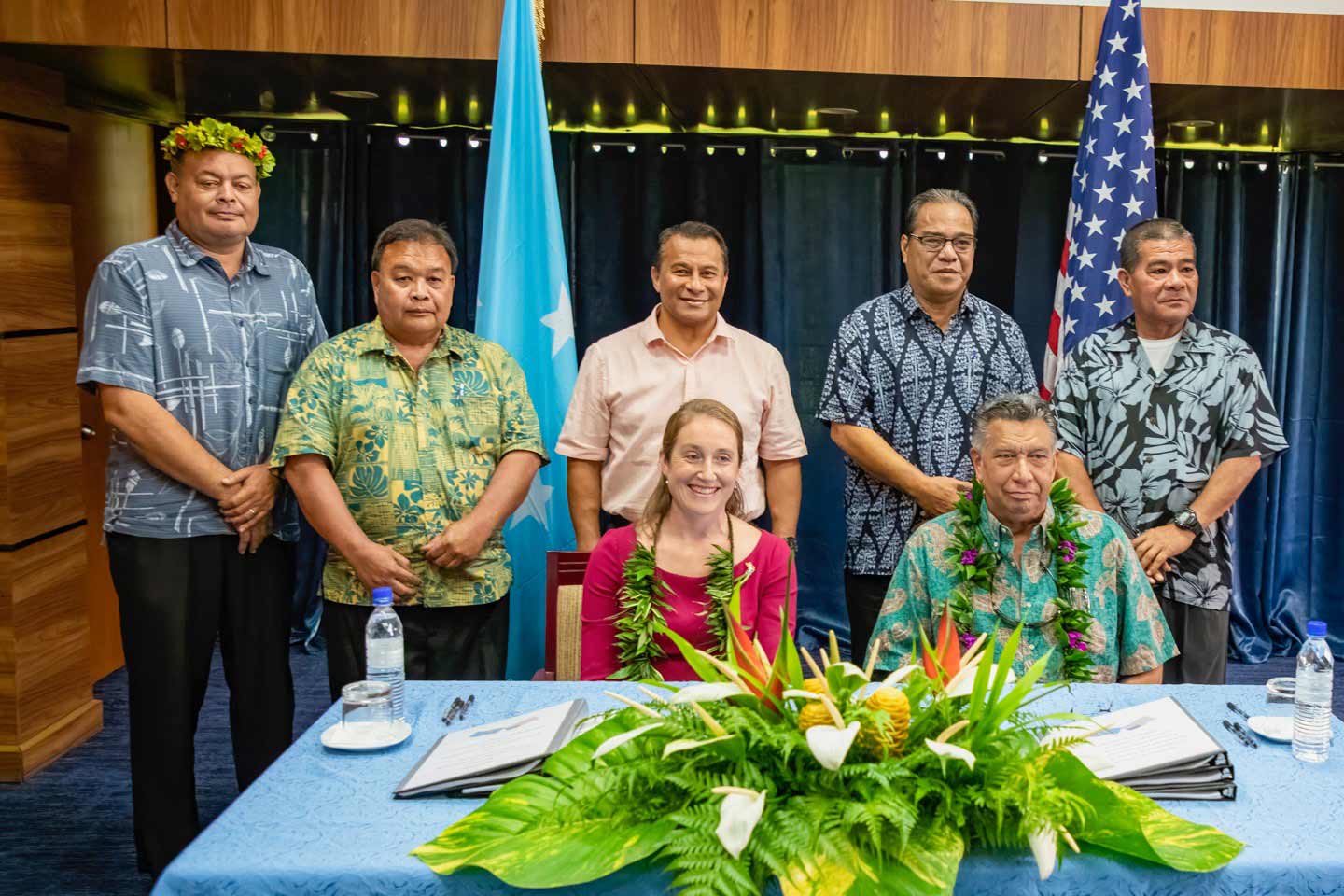On July 26, 2023, CEO Katherine McGrady presented CNA’s 7th Annual Teamwork Award to a group of systems engineers who are adapting emerging technologies to the needs of first responders. McGrady said, “This team thrives where emerging technology and emergency management intersect. They have successfully brought together CNA expertise in AI, machine learning, cybersecurity, drones, public safety, and emergency response planning. And they have made a name for themselves and CNA in a series of multi-stage prize competitions.”
CNA’s Emerging Technology Team originated in August 2021, when the National Institute of Standards and Technology (NIST) announced the Shields Up! Securing Public Safety UAS Navigation and Control Challenge. The challenge called for ideas to improve the cybersecurity of uncrewed aerial systems, or UASs, deployed by first responders for law enforcement, firefighting, and other emergency services. Steven Habicht, director of CNA’s Center for Enterprise Systems Modernization, brought this opportunity to his colleagues. Adam Monsalve, who led the project team for this challenge, recalled the conversation on an episode of CNA Talks last year.
“I told him, ‘It sounds interesting; it also sounds really challenging.’ And there was a bit of a scheduling crunch, so, in my mind it was a nice idea, but it wasn’t really feasible. And then he emailed me back and said, ‘Congratulations. You are going to lead this work.’”
The Emerging Technology Challenge Team partnered with RIIS, a mobile application and software development company, and got to work. Their solution was elegant in its simplicity, targeting overlooked vulnerabilities in UASs using unchanged default settings. They first demonstrated how hackers could exploit vulnerabilities in network and security settings, and then developed a countermeasure to protect against such a hack.
On a clear, cold day in Westminster, Maryland, CNA and RIIS, demonstrated how the system works. Following a fictional scenario, a dangerous suspect flees a crime scene into a wooded area. A law enforcement UAS operator launches a quadcopter to track the fugitive until enough police can arrive to apprehend the suspect. But a nearby “hacker” takes control of the UAS, the suspect escapes, and the mission fails. On another try, the team demonstrates how their countermeasure system automatically identifies vulnerabilities and changes the settings on the UAS, foiling a second attempted breach.
The effectiveness of their solution was recognized as they won all three rounds of the competition. Monsalve spoke about this experience on CNA Talks.
“There were some long nights … scheduling and logistics to put together the live demonstration, including fighting against the weather, which we couldn’t control as much as we would have liked to. So when it came to an end, and we were declared the winners, it was really amazing. We were really proud of all the work we put in.”
In the award presentation, McGrady acknowledged this flexibility: "They adapted to repeated reschedulings of their presentation—and a change in demonstration format scrambled their preexisting staging plans. But the team members took on new roles and pivoted to adapt to new format requirements.”
The Emerging Technology Team has competed in two more NIST challenges since this first success. The second challenge asked teams to design and build a UAS solution that meets first responder requirements for indoor operations while also fitting within a constrained budget. The team proposed the CNA‐RIIS UAS Indoor Solution for Emergency Response or CRUISER. The system is durable, easy to control, effective in low-light conditions, and uses machine learning to categorize incoming data. CRUISER even integrates with existing first responder applications. The team’s solution made it to the final round of this competition.
In the third challenge, NIST challenged innovators to show how data generated from 5G infrastructure, smart buildings, transportation and public safety entities could be collected, analyzed, and presented to public safety leaders and first responders. The CNA-RIIS team developed a concept for the First Responder Awareness Monitoring during Emergencies (FRAME) system. FRAME includes four architecture components: data acquisition, middleware, application, and presentation. Together, they take in, analyze and categorize sensor data via a machine-learning algorithm. The results are integrated with existing first responder applications for visualization. Their proposal recently advanced to stage three of the competition. Across all three challenges, the team has already been awarded $110,000 in prize money, with more than $250,000 still up for grabs.
While the team’s professional achievements are impressive, what is equally impressive is their commitment to supporting one another. As McGrady said in her speech, “When an engineer at partner group RIIS welcomed his first child to the world, CNA team members adjusted their schedules and travel plans to ensure he could be with his family. For the third project, team members reshuffled roles to provide growth opportunities for those with less experience. This mutual support makes them a model for all CNA teams.”
While he’s happy that his team has now also won a CNA award, Habicht and his team aren’t done yet. “I was very excited to hear we won the Teamwork Award; it was humbling to be recognized, and it allowed me to reflect on all the great work our team has accomplished in the last few years,” he said. “Our team is constantly looking for new challenges—both literally and figuratively in this case. It is a fun and exciting avenue to work directly with government sponsors to create solutions using emerging technologies to enhance public services.”



